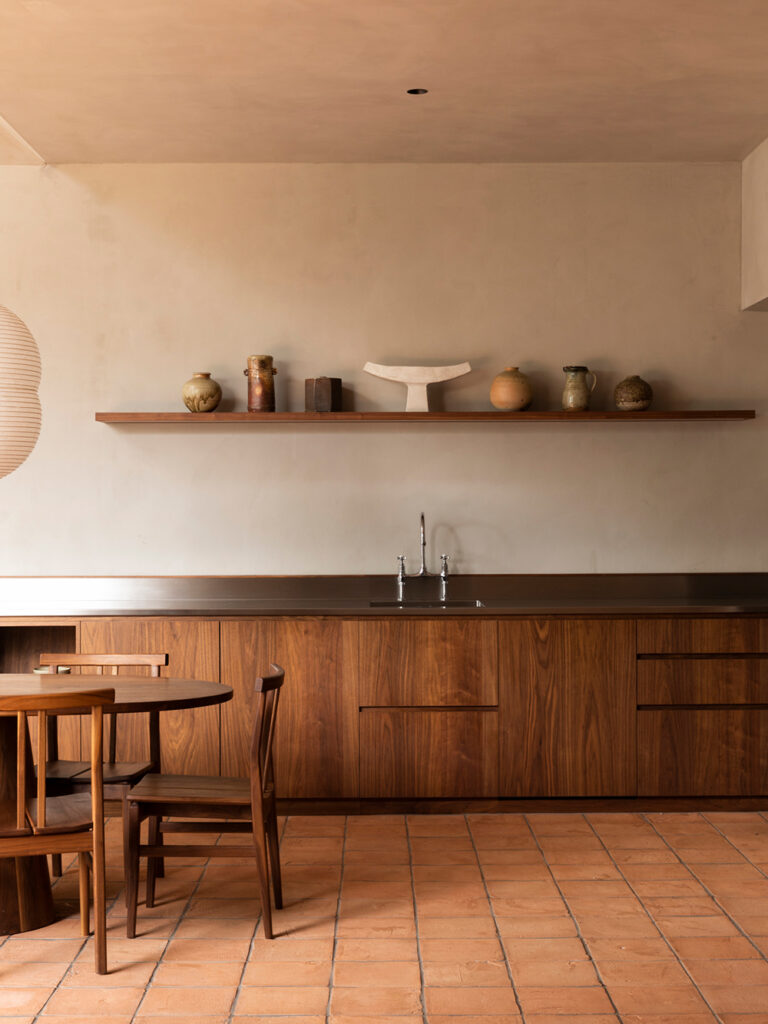
The arrival of the winter season implies not only dressing ourselves in comfy layers but also preparing our interiors for the cold months. Moreover, if there is anyone who has mastered the art of cozy and warm interior design it is Alaskan Native peoples who’s holistic approach intertwines functionality, sustainability, and a rootedness in cultural traditions. By observing the methods of groups such as the Inupiat, Yup’ik, Aleut, and Athabaskan among many other indigenous peoples, we can learn more about our interiors and the way they are influenced by climate, and their relationship with the environment.

The traditional knowledge that has shaped Alaskan Native’s interiors is visibly encompassed by an intimate understanding of harsh Northern climate and a longstanding custom of craftsmanship. Thus, from these interiors we can also learn about the use of locally sourced materials and techniques to optimize insulation and spatial layouts for energy efficiency as well as aesthetic approaches to create natural and comforting spaces.

An overview of Alaskan design
Warm Alaskan interiors comprise a blend of architectural adaptations with natural materials such as animal hides, furs, and woods for insulation and strategic spatial layouts that retain the heat. Moreover, through people’s understanding of the extreme climate, a tradition of central fireplaces or wooden stoves as focal points came to be. These central features are embellished by cultural artifacts and textiles that reflect a sense of warmth and comfort. Using this strategy we can learn how warmth not only comes from a physical force but also emotional factors that transform our perception of a space.

Thermal design for genuine insulation
Before looking at the interior elements that comprise our home’s decor, we must take an architectural perspective to incorporate design features that optimize thermal efficiency. Some of these include angled roofs that shed snow, insulated walls, and smaller windows that reduce heat loss. Thus after ensuring that our architecture will back up our naturally warm interiors, we can turn our attention indoors starting with the adequate materials for a cozy experience. In this case, the use of natural sources such as animal hides, furs, and thick rugs are the most successful for not only a physical warming effect but a visually calming aesthetic.

Layers and layers of warmth
As mentioned before, the most straightforward and simple method of adding warmth is through the use of naturally thick and insulating materials. In many cases these involve textiles such as rugs, blankets, and thick curtains that help trap heat and transform the ambience of our interiors. However, using one of these elements is not enough to fully immerse our homes in a cozy or welcoming state; for that we require the layering of natural fibers and textiles over each other without the fear of being over-the-top. In fact, as an added preventive measure why not include a wooden stove or fireplace that complements the intimate and comfortable lifestyle? When it comes to physical factors such as heat or cold, the only one who can judge how much is enough is your body.

Strategic layouts
Just as with the overall structural composition of our homes, each room’s structure and specifically its layout, is also a key factor to consider for heat retention. For example, communal areas such as the living room or dining room might be centralized to benefit from the main heating source. These gathering spaces that we naturally hover towards for warmth, also foster a sense of togetherness and hospitality that reaches a spot in our hearts that the cold can’t reach.

Turning the spotlight on decor
Cultural artifacts and decorative elements such as handmade sculptures, woven rugs, traditional artwork, and heirlooms are integral components in Alaskan Native interiors. What they tell us, more than displaying simply an aesthetic beauty, is the long history that connects people with their ancestors and their environment. Thus, every household can evoke a similar connection to a particular background, community, or shared memory that brings warmth in a way that actual heat does not. Moreover, to truly showcase and honor these decorative elements we must select the right lighting. This can come either from our natural surroundings through strategically placed windows that capture sunlight, or through warm lighting sources such as candles and warm-toned fixtures that contribute to a cozy atmosphere during the long winter nights.

A final word
Incorporating the methods and insights we have described into contemporary design practices and interiors is easier than one would imagine. Following Alaskan Native peoples’ thoughtful, resilient, and environmentally conscious way of viewing space can teach us more about our need to prioritize human comfort while harmonizing with nature’s forces.
How will you keep your interiors warm this winter?
